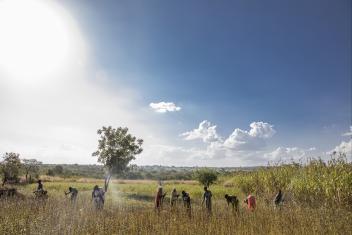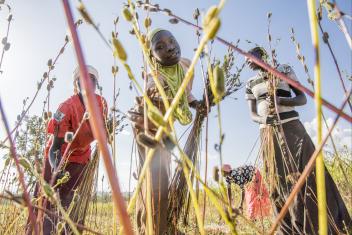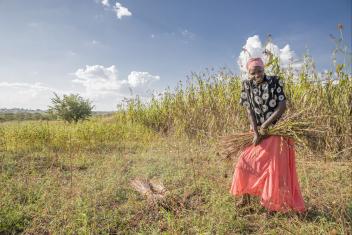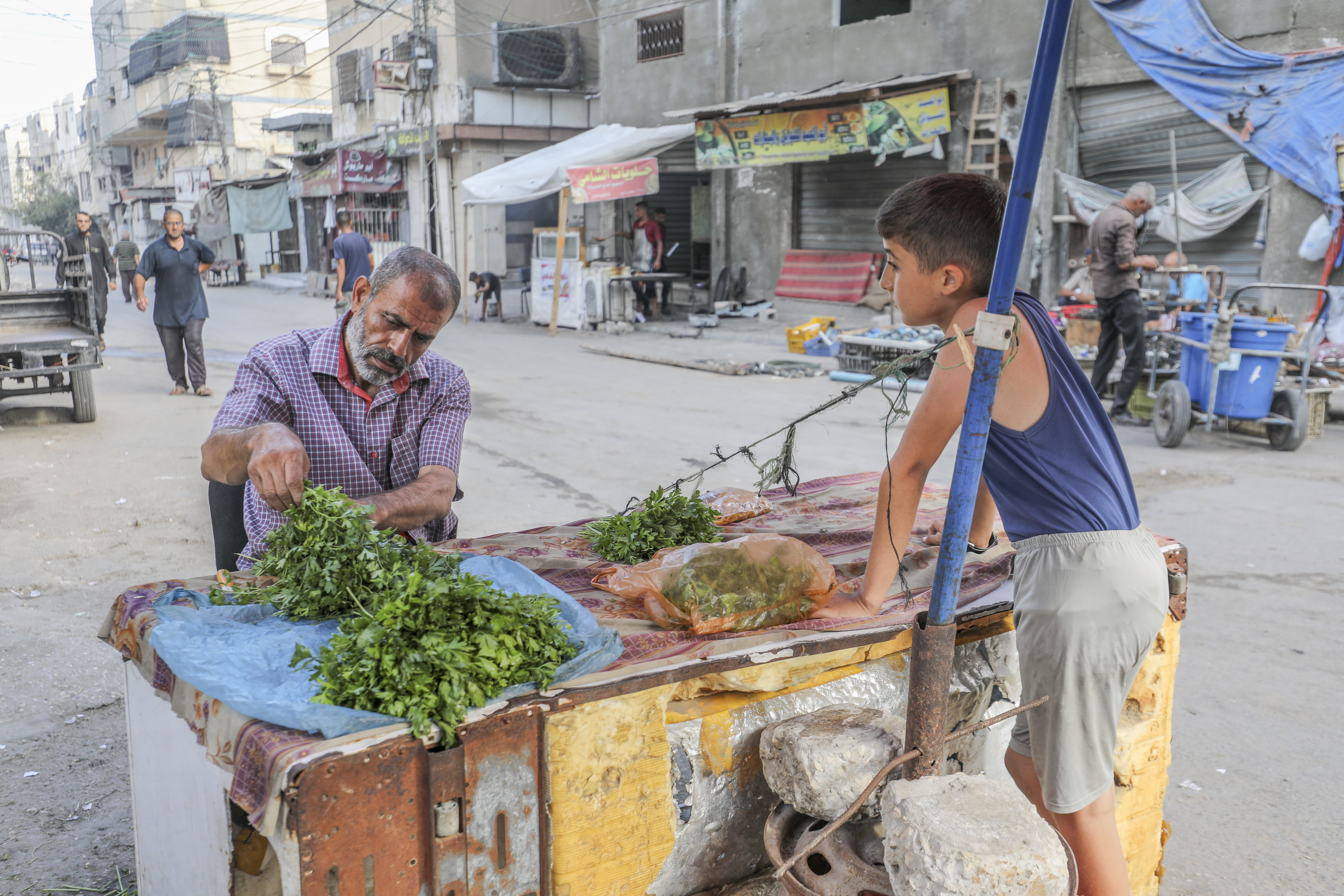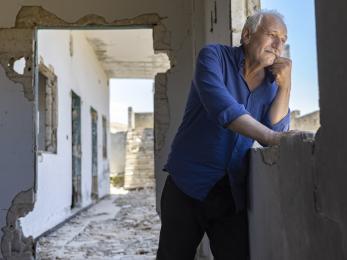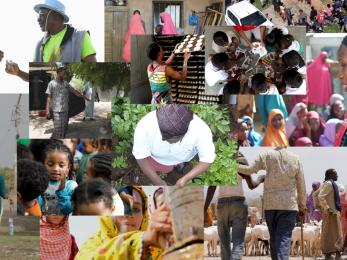In Uganda, two women form a friendship without borders
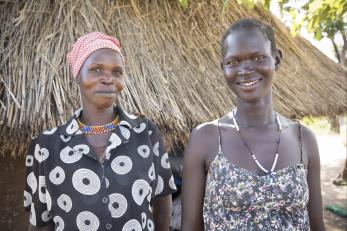
Guo slips behind a wall of slender, shoulder-high sesame stalks, the late afternoon sun throwing long shadows on the ground around her. She bends low, using her hands to pull the plants from the soil. Several women laugh and chat in the surrounding field, expertly navigating the spindly rows, carefully tending the towering growth they’ve fostered from seedlings.
Guo hands a bundle of cut sesame to her friend, Tiko, who will secure it with twine to distribute among the women. She takes a breath of hot air, wipes her forehead and steps into the next row to repeat the process.
Nearly every day Guo and Tiko work this land with the other women, using the combined power of their bodies and skills to grow crops to eat, sell and sow in the next season. Their determined efforts have spawned not only a deep and nurturing friendship, but a shared vision for the future: These plants — this harvest — are the better life they’re building together.
Guo is a South Sudanese refugee. Tiko is Ugandan. And theirs is a community, united.
South Sudan refugees face the challenge of rebuilding
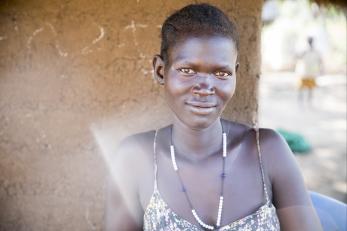
Guo, 27, walked for a month with her four young children before reaching Bidi Bidi refugee settlement in northwestern Uganda. She arrived in the fall of 2016, after living through three years of the unrelenting violence that has taken hold of South Sudan.
Since conflict first erupted in South Sudan in December 2013, increasingly-brutal fighting has plunged the country into a desperate humanitarian crisis: 7 million people are in need of aid; 1.9 million are internally displaced; over 5 million people face hunger. The food crisis is so dire famine was declared in South Sudan in 2017, and families continue to live under the threat of starvation.
Nearly 2 million people have fled for safety in neighbouring countries. Over 1 million, like Guo, have sought refuge in Uganda alone, making it home to the largest refugee population in Africa.
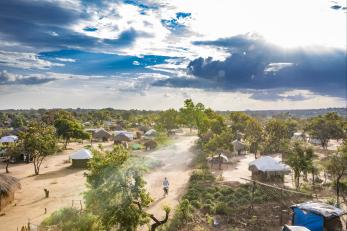
“There was nobody who could build me a house,” Guo says, recalling her arrival to the sprawling settlement. She had been separated from her husband by the war and fled with her children alone. “I struggled [to do it] myself.”
She found a piece of land and built a small mud hut with her own hands. Piece by piece, she began the onerous process of putting her family’s life back together in a country not their own.
As a single mother with four children to protect, there was only ever one option: keep going.
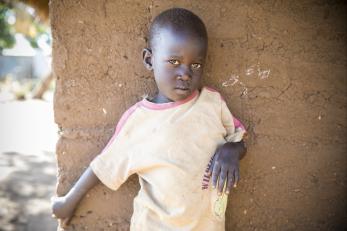
Now more than a year later, Guo’s journey is far from over. If she is weary, though, she doesn’t show it, speaking only with resolve as she describes the enormous undertaking of supporting her family as a mother and a refugee.
“I have a lot of work to be done,” she says. “In the field I have work to be done. I need to cook for the children, and look for money for the survival of the young ones. These are all on me as being a woman.”
There are currently more than 1 million refugees in Uganda, 80 per cent of whom are women and children who escaped war — only to immediately start restoring the homes, livelihoods and educations they were forced to leave behind.
For these women, including Guo and so many others around the world, conquering one challenge is not the end; it is the beginning of rising to the next. But while Guo still faces plenty of hardships as she forges ahead, her burdens are lightened by the friend who now stands by her side.
A community grows together
Before heading to the field to harvest, Guo and Tiko bask in a rare moment of rest, the two veiled in the shade cast by the same sturdy, mud hut Guo built from the ground up all those months ago.
Guo calls to her young son, Nancy, vying for a smile, as he and the other children run circles through the settlement, chasing the neighbour’s ducks and kicking up the dusty ground.
Bidi Bidi settlement — now the largest refugee settlement in the world — materialised in a matter of months, bringing hundreds of thousands of people desperate to escape conflict to an area of Uganda that was previously unpopulated and underdeveloped.
Such an influx of people carries with it an incredible need for resources like land and water, but also an immense amount of potential. At that moment, when many could have seen a burden, Tiko saw possibility.
“It was a sudden happening,” says 26-year-old Tiko, a mother of three, still seated with Guo under cover from the sun, the warm air between them disguising the reality that theirs is a friendship born from crisis.
“It was also somehow ... somehow OK,” she shrugs. “We are sharing all of our things together. They can help us. We can also help them.”
The pair first met through one of Mercy Corps’ farmers’ groups, which help South Sudanese refugees and Ugandan people work together to grow stronger, more plentiful crops. Refugees are given a small plot of land when they arrive at the settlement; local farmers have larger plots, but few people to work them. By combining their resources, they have more land, more seeds, more physical power, more food — and more opportunity.
Since they started working alongside one another, Tiko and Guo have become more than neighbours. They have become allies, people who fully support one another and know they are made stronger when they band together.
“We are growing crops in our group in order to help ourselves,” Tiko explains. As she speaks, she does so with clear devotion to her friend and full confidence in this new, diverse version of her community. “If you have a second problem and you need some money to solve it, you can ask the members. They will help you so that you solve your problem.” She gestures with her hands to get her point across: We can do this, together.
Over time the women have grown to support each other emotionally and financially; they share knowledge and skills. Together they grow sesame, tomatoes, green pepper and eggplant to feed their children. Tiko even helps Guo find other work to support her family.
“This is my friend,” Guo explains with a small, grateful smile. “If she has [extra] work, she informs me there is work. I can go and help her and get money.”
For both, the determined fight for a better life is no longer a battle they’re pursuing alone.
“Since they have a hardship in their mother country, they have to feel at home here in my mother country as well,” Tiko says, her voice as steady and sure as her gaze. For her and Guo and the other women, it was never a question of whether they would lift one another to a place where they are healthy and strong. It was only a question of how.
We are coming together, Tiko says, without wavering. “This is the result: us, we.”
